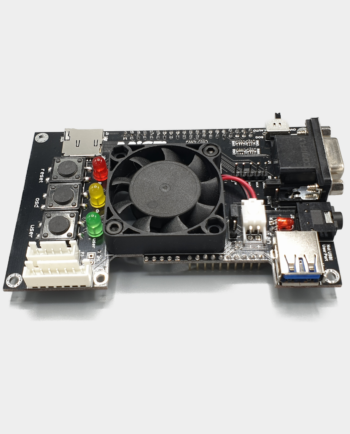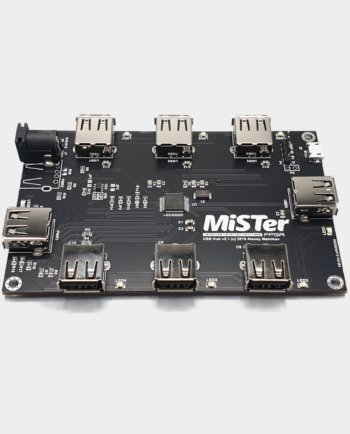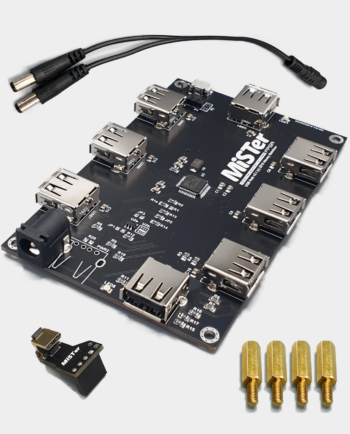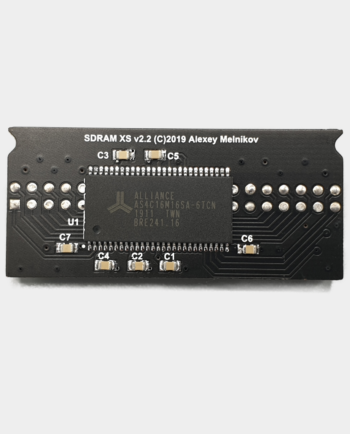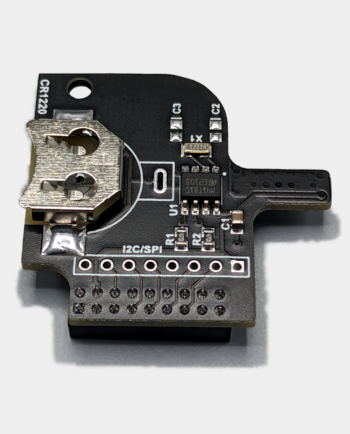Sort By
Price
Tags
32MB Memory 128MB Memory Acrylic BlisSTer Bluetooth Dongle Case Fan Plate Heatsink LLAPI Micro USB MiSTer Accessories MiSTer Addon MiSTer Addons MiSTer Case MiSTer Cooling mt32-Pi Nintendo 64 PlayStation Power Supply Printed Circuit Board Protection Real Time Clock SDRAM SNAC Ultimate USB Hub Useful WiFi Dongle
MiSTer Addons
The MiSTer FPGA project lead developer Alexey Melnikov (Sorgelig) has designed and added a number of daughter boards, these provide additional functionality to the required base DE10-Nano board. A basic entry level MiSTer setup starts with just a bare DE10-Nano board. However with just one additional addon board the SDRAM module, you will be able to use the majority of available computer, console and arcade cores.
The most popular expansion addon boards are as follows, the MiSTer SDRAM board which is plugged into the JP1 (GPIO 0) connector of the DE10-Nano board. Providing a retro memory module for many cores.
The MiSTer IO board is plugged into the JP7 (GPIO 1) connector of the DE10-Nano and provides a VGA output, 3.5mm audio jack with TOSLink, three buttons, three status LEDs, secondary micro SD card slot, fan header, user IO connector, two additional headers allowing integration of the MiSTer into cases.
The MiSTer Digital IO board leaves both DE10-Nano GPIO connectors free while still providing, a dedicated on off power switch, 3.5mm jack for tape input, digital TOSLINK connectors, a secondary microSD card slot, three status LEDs, three push buttons, expansion connector, external LED and button headers for integration into a MiSTer case.
The Real Time Clock or MiSTer RTC board provides real time offline for certain MiSTer cores, the RTC board for the MiSTer is plugged into the Terasic DE10-Nano’s LTC connector.
The MiSTer USB Hub Board is an expansion board allowing for convenient USB device connections, this add-on board provides a 7 port USB hub which sits neatly under the DE10-Nano main board.
-
MiSTer IO Board A/V Pro v9.2
£41.99 – £57.99Price range: £41.99 through £57.99Select options This product has multiple variants. The options may be chosen on the product page Show more -
MiSTer Analog IO Board v6.1
£29.99 – £45.99Price range: £29.99 through £45.99Select options This product has multiple variants. The options may be chosen on the product page Show more -
MiSTer Digital IO Board v1.2
£26.99 – £42.99Price range: £26.99 through £42.99Select options This product has multiple variants. The options may be chosen on the product page Show more -
MiSTer MT32-Pi Hat v2.1
£24.99 – £29.99Price range: £24.99 through £29.99Select options This product has multiple variants. The options may be chosen on the product page Show more -
MiSTer Laggy Display Lag Tester v1.3
£10.99 – £16.99Price range: £10.99 through £16.99Select options This product has multiple variants. The options may be chosen on the product page Show more -
BlisSTer Hub Rev.3 For MiSTer
£64.99Original price was: £64.99.£58.99Current price is: £58.99.



